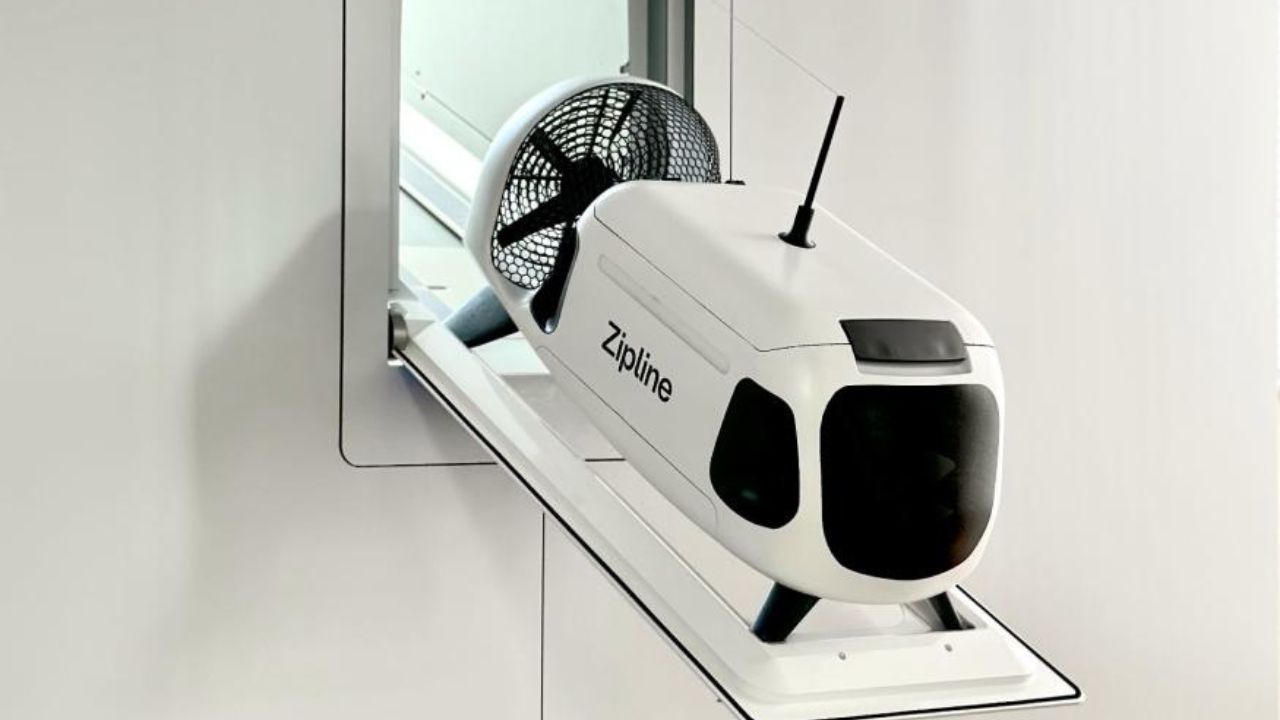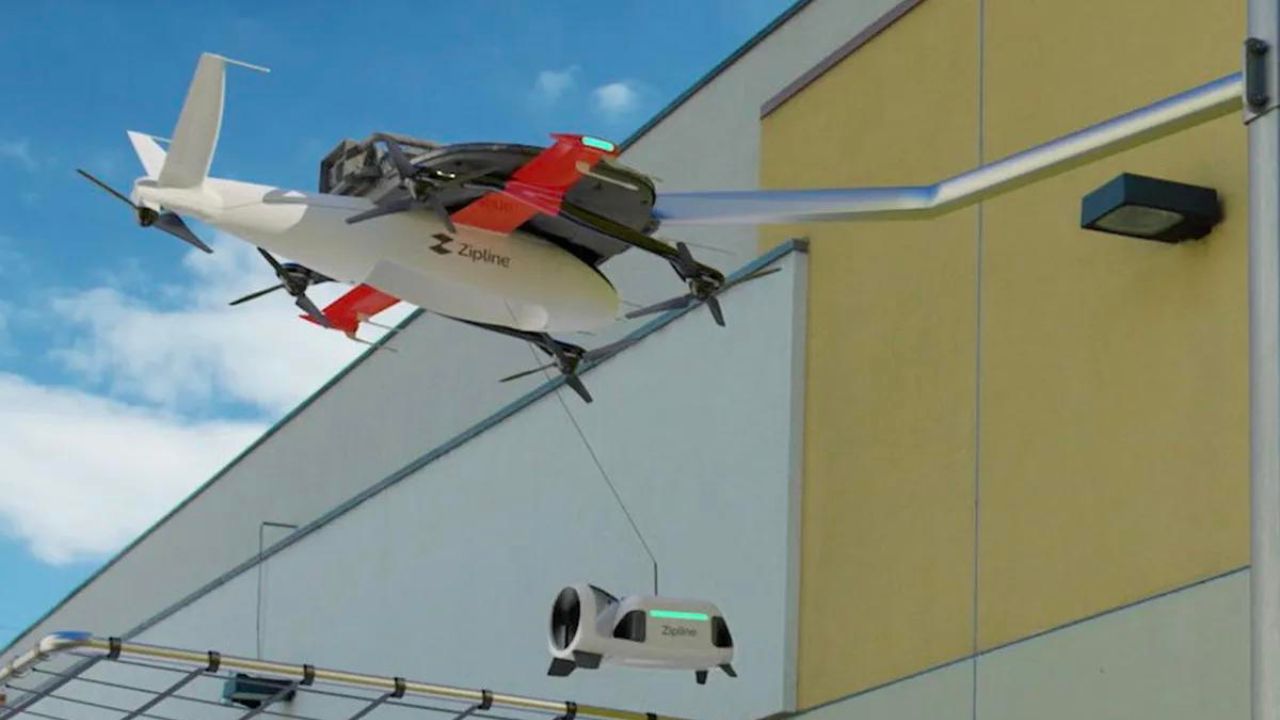Drone delivery technology is making huge strides this year as the autonomous delivery company Zipline announces its latest device that it has been working on since 2014. The device, known as the Platform 2 (P2) system, will cut delivery times in half and potentially be a new life-saving asset for delivering medical supplies, prescriptions, and food.

How does the P2 Zip work?
The build of the P2 Zip consists of a droid, which is essentially a streamlined box with a shrouded propeller at the rear. A person sending out a delivery will put the package within the droid, and the droid will then be placed inside the belly of one of Zipline’s P2 Zip eVTOL (electric vertical take-off and landing) drones.

Credit: Zipline

Credit: Zipline
Once the P2 Zip takes off, it flies at a height of approximately 300 feet in the air. The drone can carry up to 8 pounds at a time and can travel as far as an out-and-back service radius of 10 miles. Once the drone reaches its destination, a second droid is lowered by a retractable tether and uses sensory cameras to detect where to land the package.
MORE: HACKER DRONE CAN SEE THROUGH THE WALLS TO SPY ON YOU
What are the benefits of the P2 Zip?
One of the best benefits of this new invention is that it will make delivering packages locally a lot quicker. The drone cannot make long journeys, however, it can certainly make it from your local grocery store to your house and back without an issue.
This could also be a potentially life-saving invention as the company will be implementing it at hospitals and other healthcare facilities. Michigan Medicine, the MultiCare Health System, and Salt Lake City’s Intermountain Health already plan on using it to deliver prescriptions. It will also be used by some companies to deliver blood and vaccines to remote areas. At the same time, companies like Sweetgreen have also signed on to use the service to deliver food to customers’ homes.

Credit: Zipline
Zipline hopes to have the P2 Zip working and in service in just about a year. The only downside I can imagine is that many other tech companies are working fast to make drone delivery happen, and we may have an issue of drone traffic in the sky before we know it. Until then, we’ll have to see what plans these companies have to try to limit that issue.
Do you think there should be a standard for drone delivery operations? Tell us your thoughts.
Related:


